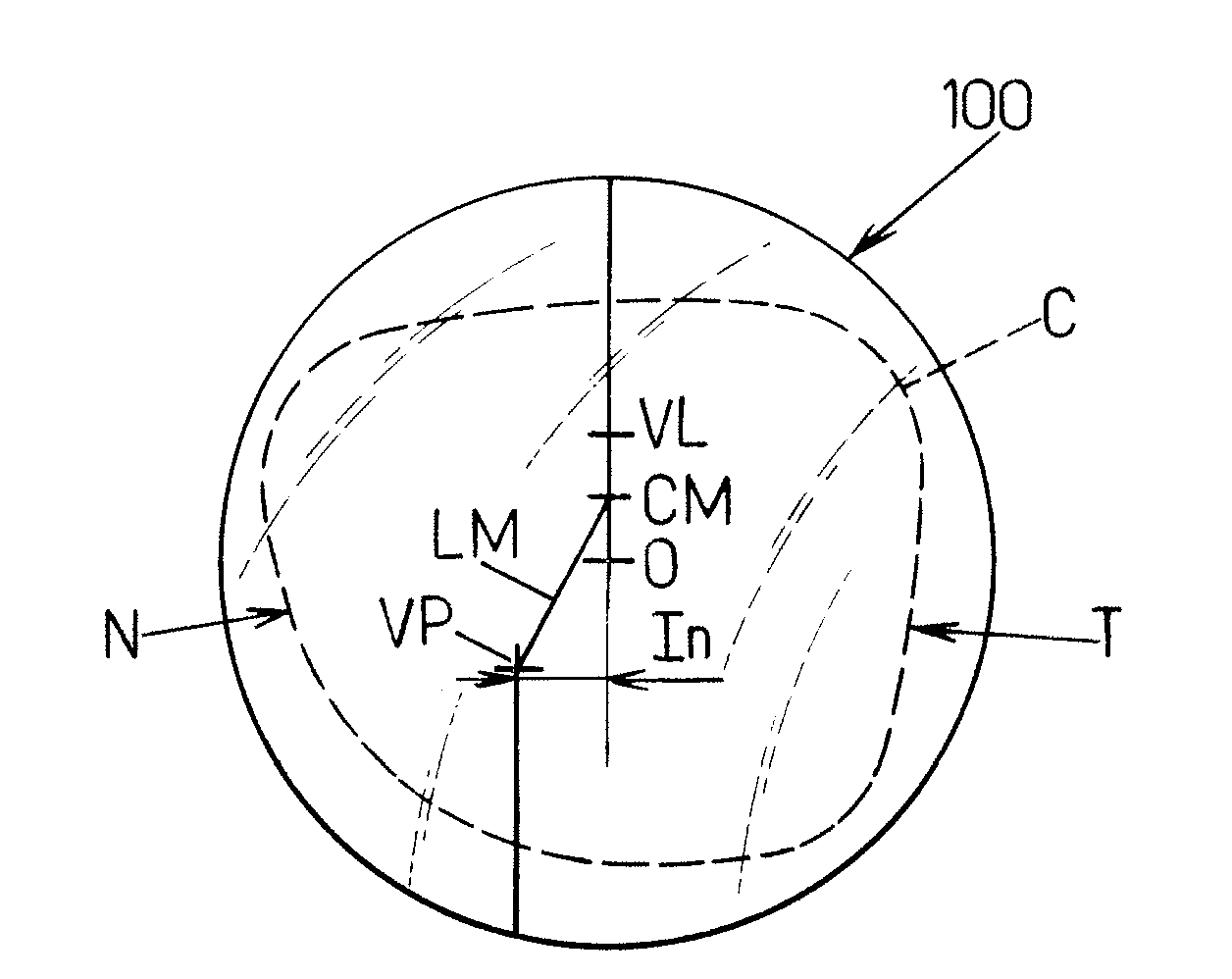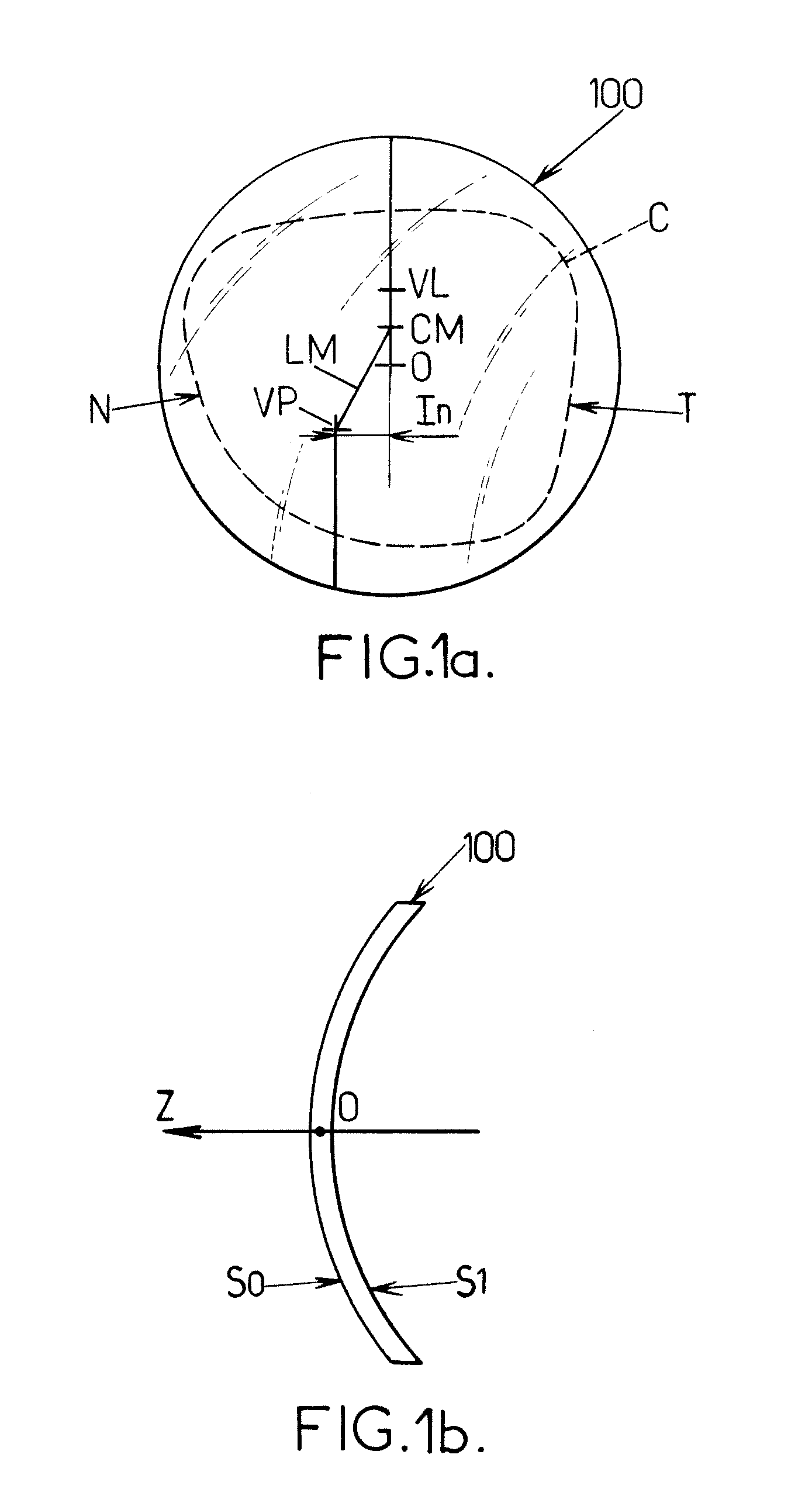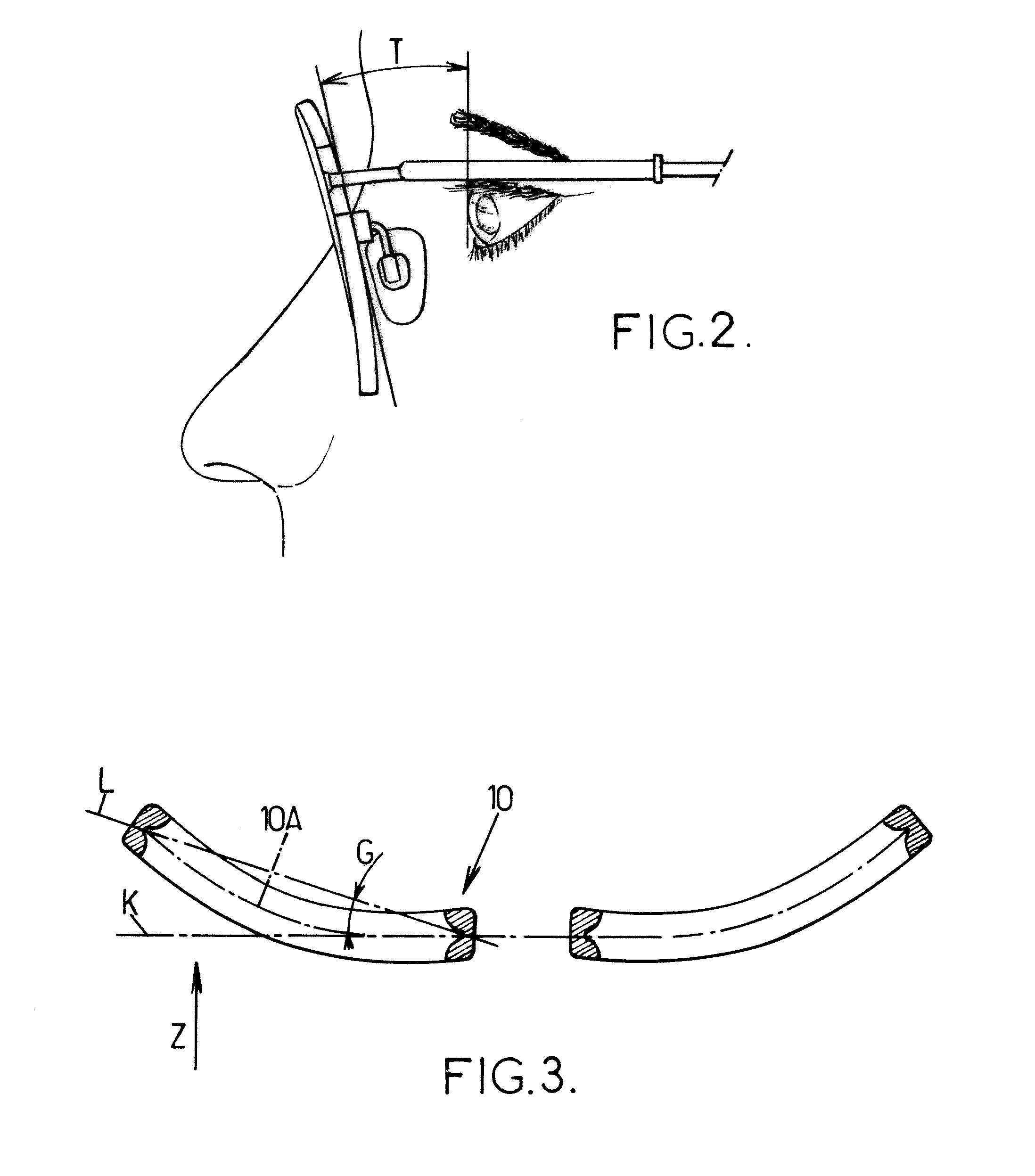Method for Determining the Inset of a Progressive Addition Lens
a progressive addition and inset technology, applied in the field of method for determining the value of the inset of the progressive addition lens, can solve the problems of reducing the width of the distance-vision region, measuring in a horizontal direction, and affecting the comfort of the wearer
- Summary
- Abstract
- Description
- Claims
- Application Information
AI Technical Summary
Benefits of technology
Problems solved by technology
Method used
Image
Examples
Embodiment Construction
[0253]Usually, a person needing to wear spectacles and having thus a prescription filled by an ophthalmologist or by another authorized eye care professional goes to the premise of an optician for choosing the frame of the future spectacles. The future wearer of the spectacles may try several spectacle frames and finally chooses one of the tried frames.
[0254]The optician may help the wearer to select a frame for example which fits properly the wearer's face, that is stable on the nose and offers sufficient height between the pupil and the lower rim of the frame.
[0255]The optician may then perform measurements on the spectacle frame the wearer as chosen. According to different embodiment of the invention, the optician may provide measurement data of the chosen frame.
[0256]For example, the optician may evaluate for the right and / or left eyes the distance DVO between the cornea of the wearer's right or left eye and the progressive addition lens at the level of the fitting cross when th...
PUM
 Login to View More
Login to View More Abstract
Description
Claims
Application Information
 Login to View More
Login to View More - R&D
- Intellectual Property
- Life Sciences
- Materials
- Tech Scout
- Unparalleled Data Quality
- Higher Quality Content
- 60% Fewer Hallucinations
Browse by: Latest US Patents, China's latest patents, Technical Efficacy Thesaurus, Application Domain, Technology Topic, Popular Technical Reports.
© 2025 PatSnap. All rights reserved.Legal|Privacy policy|Modern Slavery Act Transparency Statement|Sitemap|About US| Contact US: help@patsnap.com



